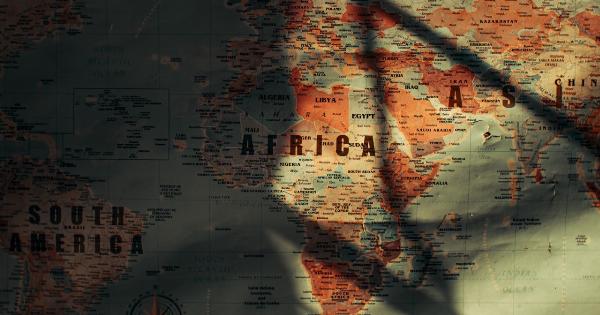The Ebola virus outbreak is currently one of the most significant public health challenges worldwide.
According to the World Health Organization (WHO), the latest outbreak of Ebola virus disease is the largest and most complex outbreak since the virus was first discovered in 1976. The Ebola virus has claimed the lives of thousands of people in West Africa since the outbreak began in 2014, and health experts around the world are predicting that the crisis is far from over.
Understanding the Ebola Virus
The Ebola virus is a severe and often fatal illness that is transmitted to humans from animals such as bats and monkeys. It spreads between humans through close contact with bodily fluids such as blood, sweat, and saliva.
The virus can cause symptoms such as fever, headache, muscle pain, stomach pain, and vomiting, and later stages can develop symptoms such as bruising, bleeding, and organ failure.
The Current Situation in West Africa
The Ebola outbreak in West Africa began in early 2014, and since then, the disease has claimed the lives of thousands of people in Sierra Leone, Guinea, Liberia, and other countries in the region.
Despite the best efforts of public health officials and healthcare workers in affected areas, the disease continues to spread rapidly.
Why Are Experts Predicting 20,000 Cases by November?
Based on current trends, health experts are predicting that the number of Ebola cases could reach as high as 20,000 by November 2015. The reason for this alarming prediction is that current control measures are not sufficient to contain the outbreak.
In order to stop the spread of the disease, much more robust and coordinated efforts are needed from the international community.
Challenges of Containing the Outbreak
One of the biggest challenges in containing the Ebola outbreak is the lack of resources available in the affected areas.
Many of the countries in West Africa are among the poorest in the world, and they simply do not have the healthcare infrastructure necessary to respond effectively to an outbreak of this magnitude. In addition, many people in these countries are deeply distrustful of government officials and healthcare workers, making it difficult to implement control measures and treatment programs.
The poor infrastructure and the distrust of government officials are compounded by several other challenges related to the nature of the virus.
For example, people who have recovered from Ebola can still transmit the virus through contact with bodily fluids, which means that isolation and quarantine measures must be put in place and properly enforced. Due to the long incubation period of the virus (up to 21 days), it is difficult to know who might be contagious and who is not, making it challenging to isolate those who are infected.
The International Response
Given the severity of the Ebola outbreak and the challenges facing the affected countries, the international community has responded with a range of measures designed to support relief efforts and help contain the spread of the disease.
These measures have included the following:.
- Deploying medical teams and healthcare workers to affected areas to provide care and treatment to those who are sick.
- Providing financial and logistical support to countries affected by the outbreak to help mobilize resources and improve healthcare infrastructure.
- Developing and testing experimental drugs and vaccines designed to treat and prevent Ebola.
- Conducting research and analysis on the spread of the disease and developing better models for predicting the course of the outbreak.
The Need for a Coordinated Effort
Despite the ongoing efforts on the part of the international community, there is still a great deal of work to be done to contain the Ebola outbreak and prevent further spread of the disease.
Many of the current control measures have been hampered by a lack of coordination among the various groups and agencies involved in the relief efforts. More work is needed to ensure that all stakeholders are working together effectively and efficiently to bring an end to the crisis.
Conclusion
The Ebola outbreak is one of the most significant public health challenges facing the world today. Health experts are predicting that the crisis is far from over, and that the number of cases could reach as high as 20,000 by November.
In order to stop the spread of the disease and bring an end to the crisis, much more robust and coordinated efforts are needed from the international community. By working together, we can help contain the outbreak, treat those who are sick, and prevent further spread of the disease.























